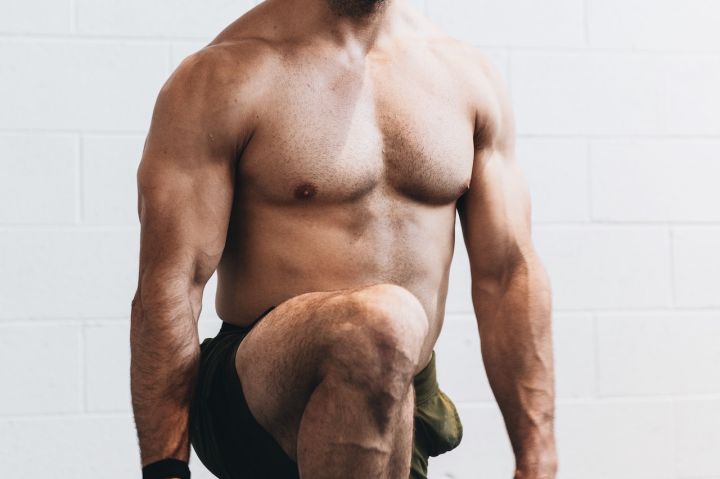The Difference Between Different Bench Presses Can Be Huge! It Looks Simple And a Lot Of People Get It Wrong
there has been a flood of talk about the importance of the flat bench press, however recently a lot of fitness self-publishers have been preaching the flat bench press abandonment theory, with the core view being that many people have weak upper chests and only do upper inclines if they can do them.

Opinions are largely shaped by personal experience, however the debate between the upper incline and the flat bench has been going on for a long time. While both are really important, the argument for choosing only one is too extreme and over-emphasising balance is tantamount to missing the point. By understanding exactly how the two differ and what is involved in the training process, you are better able to tailor it to your situation.

upper incline bench press
the pectoralis major is made up of the clavicle and the head of the thoracic ribs (upper and lower thoracic vertebrae). The aim of the upper incline bench press is to focus more of the training on the upper pectoral muscles. The main benefit of performing the upper incline bench press is to train the upper part of the pectoral muscles.
When inclining the bench (15 to 30 degrees), the bench press activates the shoulders more, as it is similar to the shoulder press. Also, due to the angle of the bench, this movement puts less stress on the rotator cuff, a common area of injury when using the plank bench press.

however, there are some disadvantages to the upward incline bench press. Because the inclined chest press puts more stress on the upper pectoralis, it can make this muscle group more developed, whereas the flat bench press tends to develop the entire pectoralis muscle evenly.
The anterior deltoid bundle (shoulders) is also more actively stimulated at this angle, so don't work your deltoids on the second day. Never overtrain your muscles, overtraining occurs if you train the same muscle group two days in a row. Overtraining any muscle can lead to injury.

steps for the upper incline bench press
lie backwards on an upward sloping bench. Ensure that the incline on the bench is between 15 and 30 degrees. Above 30 degrees the upward incline bench press will work mainly on the anterior deltoid (shoulder). The forearm is at a 90 degree angle to the elbow.
Grip is shoulder width apart with the palms of the hands fully holding the dumbbells, palms facing the front of the body. Lift the barbell off the rack with arms locked and raise the barbell overhead.

the plank bench press is a more natural and fluid movement compared to everyday activities. However, just like the upper incline bench press, there are some drawbacks.
Professional bodybuilder dorian yates says, "I don't even include the flat bench press in my pec routine because i think it puts too much emphasis on the anterior deltoid to be an effective chest exercise. Also, the angle of the flat bench press puts the pectoral tendons in a position where they are vulnerable to injury. Most shoulder injuries and fatigue injuries from overtraining are likely to be caused by the flat bench press. Many torn pectoral muscles in bodybuilding are caused by heavy flat bench presses."

as a personal trainer, i believe that shoulder injuries are most common in men. Common mistakes are.
* not having someone to help protect
* not having someone to help put the barbell back on the rack
* imbalance between the right and left side
* the stronger side of the body lifting most of the weight, which means the barbell may be at an incline

as with other pushing movements, you need to warm up your chest and shoulders properly by using resistance bands and stretching. With the flat bench press, you need to make sure you have adequate shoulder flexibility and scapular stability to reduce potential injury.
If you feel discomfort during the flat bench press, you should consider an upward incline bench press or use dumbbells instead. Here are some tips to ensure you complete the plank bench press correctly.

flat bench press, steps
lie on a flat bench so that your neck and head are supported. Keep your knees at a 90 degree angle and your feet flat on the floor. If your back falls off the bench, you may consider placing your feet on the bench instead of the floor. The body is in a barbell lowered so that the barbell is in a straight line with the chest. Keep your hands slightly wider than your shoulders and your elbows bent at 90 degrees. Grasp the barbell with the palms of your hands behind your body and your fingers holding the barbell in a full grip.

exhale, squeeze your abdominals and use your pectoral muscles to push the barbell from the rack to the top. Straighten your arms in the contracted position and squeeze your chest.
Inhale and lower the barbell slowly to your chest, to a distance of one inch from your chest. It should take twice as long to lower the barbell as it does to push up. Push the barbell back to the starting position with explosive pectoral force. Repeat 12 times, then add more weight to each set. Complete 5 sets.

coming back to the question of plank or upper incline, ultimately it's a question of how the experience feels and what your personal goals are. The plank bench press works the pecs better and many coaches agree that the upward incline is safer for your pecs, shoulders and rotator cuffs. If the plank doesn't cause you any damage there's no need to worry too much.
